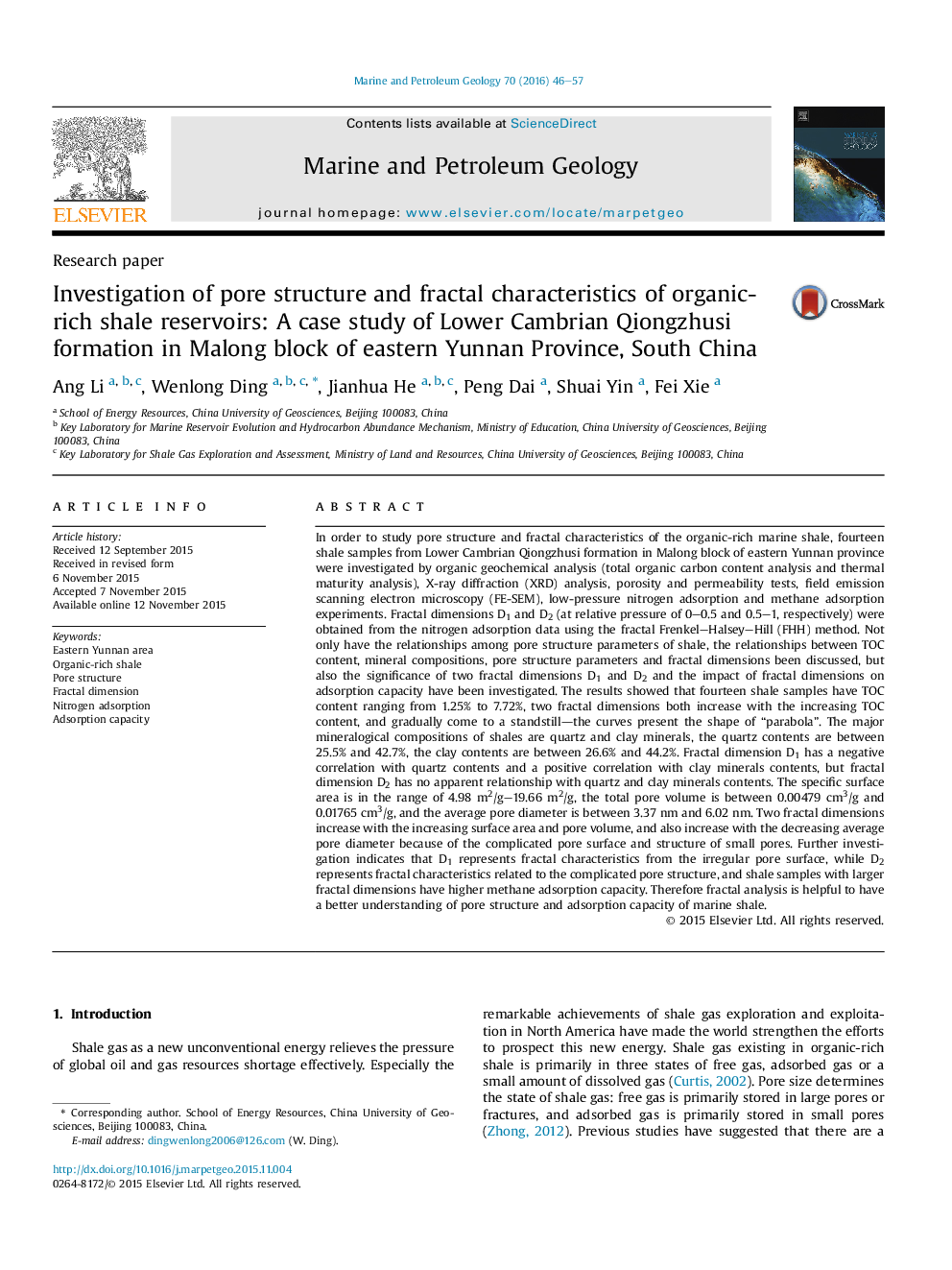| کد مقاله | کد نشریه | سال انتشار | مقاله انگلیسی | نسخه تمام متن |
|---|---|---|---|---|
| 4695444 | 1637157 | 2016 | 12 صفحه PDF | دانلود رایگان |

• Fractal dimensions of 14 marine organic-rich shale core samples were studied.
• The relationship between fractal dimensions and TOC content is characterized by a parabolic curve.
• Fractal dimensions increase with increasing surface area and total pore volume, and with decreasing average pore diameter.
• Shale with greater pore surface fractal dimension and pore structure fractal dimension has higher adsorption capacity.
In order to study pore structure and fractal characteristics of the organic-rich marine shale, fourteen shale samples from Lower Cambrian Qiongzhusi formation in Malong block of eastern Yunnan province were investigated by organic geochemical analysis (total organic carbon content analysis and thermal maturity analysis), X-ray diffraction (XRD) analysis, porosity and permeability tests, field emission scanning electron microscopy (FE-SEM), low-pressure nitrogen adsorption and methane adsorption experiments. Fractal dimensions D1 and D2 (at relative pressure of 0–0.5 and 0.5–1, respectively) were obtained from the nitrogen adsorption data using the fractal Frenkel–Halsey–Hill (FHH) method. Not only have the relationships among pore structure parameters of shale, the relationships between TOC content, mineral compositions, pore structure parameters and fractal dimensions been discussed, but also the significance of two fractal dimensions D1 and D2 and the impact of fractal dimensions on adsorption capacity have been investigated. The results showed that fourteen shale samples have TOC content ranging from 1.25% to 7.72%, two fractal dimensions both increase with the increasing TOC content, and gradually come to a standstill—the curves present the shape of “parabola”. The major mineralogical compositions of shales are quartz and clay minerals, the quartz contents are between 25.5% and 42.7%, the clay contents are between 26.6% and 44.2%. Fractal dimension D1 has a negative correlation with quartz contents and a positive correlation with clay minerals contents, but fractal dimension D2 has no apparent relationship with quartz and clay minerals contents. The specific surface area is in the range of 4.98 m2/g–19.66 m2/g, the total pore volume is between 0.00479 cm3/g and 0.01765 cm3/g, and the average pore diameter is between 3.37 nm and 6.02 nm. Two fractal dimensions increase with the increasing surface area and pore volume, and also increase with the decreasing average pore diameter because of the complicated pore surface and structure of small pores. Further investigation indicates that D1 represents fractal characteristics from the irregular pore surface, while D2 represents fractal characteristics related to the complicated pore structure, and shale samples with larger fractal dimensions have higher methane adsorption capacity. Therefore fractal analysis is helpful to have a better understanding of pore structure and adsorption capacity of marine shale.
Journal: Marine and Petroleum Geology - Volume 70, February 2016, Pages 46–57